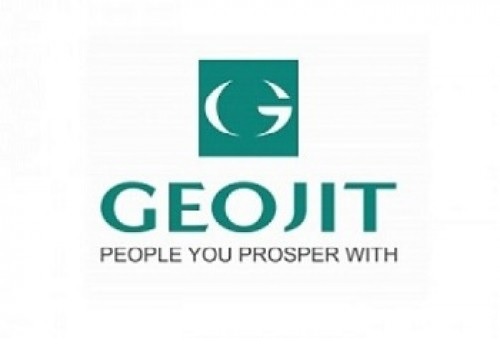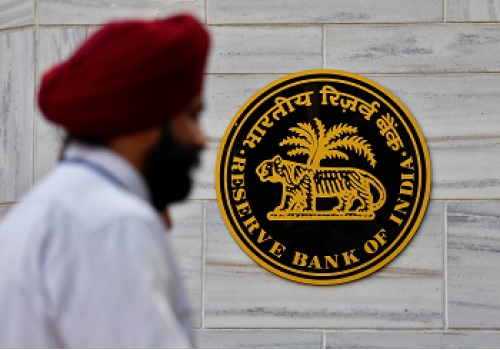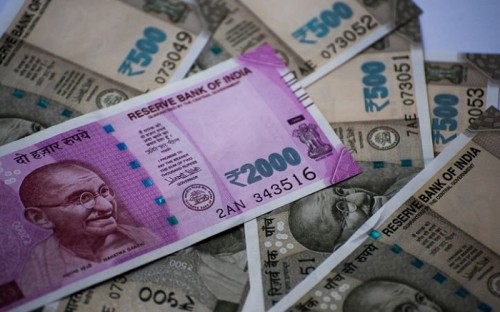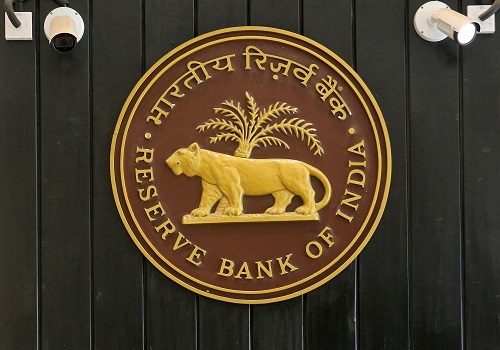Natural Gas trading range for the day is 273-291 - Kedia Advisory

Follow us Now on Telegram ! Get daily 10 - 12 important updates on Business, Finance and Investment. Join our Telegram Channel
Gold
Gold experienced a notable 1.23% increase, closing at 57,572, largely due to the unexpected Hamas attack on Israel. This geopolitical event has unsettled traders and investors, leading to increased demand for gold as a safe-haven asset. Interestingly, this rally continued despite a stronger-than-expected US jobs report, which would typically raise concerns about higher interest rates. Normally, higher rates make gold less attractive because it doesn't yield interest, but the current geopolitical uncertainty seems to overshadow this concern. Additionally, there has been an improvement in physical gold demand in select Asian markets as lower prices attracted buyers. In India, premiums reached a 17-month high as jewelers prepared for the festival season, allowing them to charge up to $5 per ounce above official domestic prices. Meanwhile, gold premiums in China, which had reached record highs in September due to limited import quotas, eased slightly. Although China increased its gold reserves in September, the overall value of these reserves decreased. From a technical perspective, the gold market is currently in a phase of short covering, marked by a 4.66% decrease in open interest alongside a price increase of 701 rupees. Key support is at 57,185, with the potential for a decline to 56,790. Resistance is currently at 57,790, and breaking through this level could push prices to test 58,000.
Trading Ideas:
* Gold trading range for the day is 57380-57870.
* Gold steadied on more safe-haven buying as the Israel-Hamas war continues to unfold with *ery uncertain consequences.
* Support also seen underpinned by a softer dollar and Treasury yields
* The marketplace is keenly focused on the Middle East as Israel has declared war on Hamas.
Silver
Silver made a significant gain of 1.36%, closing at 69,094, primarily due to the escalating Israel-Hamas conflict, which heightened geopolitical risks in the Middle East. The unexpected attack by Hamas on Israel, coupled with retaliatory actions from both sides, has raised concerns of a broader conflict that could potentially involve Iran. Additionally, silver faced headwinds from strong US jobs data, which increased expectations of another interest rate hike by the Federal Reserve this year. This prompted investors to turn to fixed income assets and somewhat reduced silver's appeal. However, silver found support in the hopes of an economic recovery in China, a tight supply situation, and the growing use of silver in various technologies like solar panels, which require high conductivity. In contrast to gold, silver serves not only as an investment asset but also plays a crucial role in multiple industries, including jewelry, electronics, electric vehicles, and solar panels. This broad and diverse demand has led to a supply deficit in the silver market, with production struggling to meet demand. In 2022, the silver market witnessed a deficit of 237.7 million ounces, as reported by the Silver Institute, and deficits are expected to persist in the coming years. From a technical perspective, the silver market is currently experiencing short covering, characterized by a 0.86% decrease in open interest and a price increase of 924 rupees. Key support levels are situated at 68,680, with the potential for a decline to 68,265. Resistance is currently at 69,355, and breaking through this level could push prices to test 69,615.
Trading Ideas:
* Silver trading range for the day is 68345-69425.
* Silver steadied amid bets that the US Federal Reserve will not raise interest rates in November.
* Fed’s Jefferson said the central bank would need to “proceed carefully” given the recent rise in yields
* Fed’s Logan said there may be less need to tighten further if long-term rates remain elevated.
Crude oil
Crude oil prices dipped by -0.32% to 7161 with traders cautious as they watched for potential supply disruptions amid military clashes between Israel and the Palestinian Islamist group Hamas. Brent and WTI had surged more than $3.50 as the clashes raised fears that the conflict could spread beyond Gaza. Hamas launched the largest military assault on Israel in decades on Saturday, while Israel pounded the Gaza Strip on Tuesday with the fiercest air strikes in the 75-year history of its conflict with the Palestinians. There is still plenty of uncertainty regarding the geopolitical ramifications of the ongoing conflict in the Middle East. The latest events in Israel don't pose an immediate threat to oil supply as the country produces very little crude oil. However, it is feared that tightened sanctions on Iran and subsequent disruptions to Iran's oil supply would have more of an impact on oil markets, if the conflict is protracted in duration. Goldman Sachs does not see any immediate major effect on near-term oil market inventories from the attacks in Israel over the weekend. It, however, added that the attacks reduce the likelihood of normalization of the country's relations with Saudi Arabia, and the associated boost to Saudi production over time. From a technical perspective, the market is experiencing long liquidation, with a -0.28% drop in open interest, settling at 8,871. Prices fell by -23 rupees. Key support levels for crude oil are at 7,098 and 7,036, while resistance is likely at 7,225, with the potential for prices to reach 7,290.
Trading Ideas:
* Crudeoil trading range for the day is 7036-7290.
* Crude oil prices eased with traders cautious as they watched for potential supply disruptions
* Brent and WTI had surged more than $3.50 as the clashes raised fears that the conflict could spread beyond Gaza.
* There is still plenty of uncertainty regarding the geopolitical ramifications of the ongoing conflict in the Middle East.
Natural gas
Natural gas prices dipped by -0.18% to 280.8 due to milder weather forecasts, reducing heating demand for the next two weeks. However, the downside is limited because of increased exports and higher global gas prices. The International Energy Agency (IEA) predicts slower global gas demand growth until 2026, especially in mature markets like Europe and North America, where demand peaked in 2021. The IEA's outlook suggests a 1.6% yearly increase from 2022 to 2026, down from the 2.5% rise between 2017 and 2021. China is expected to drive nearly half of this global demand growth by using gas for industrial production, power, and urban areas. In the U.S., gas output reached 102.7 billion cubic feet per day in October, slightly up from September but below the monthly record of 103.1 bcfd in July. However, daily output was on track to drop to 102.1 bcfd. From a technical perspective, the market experienced long liquidation with a -7.71% decrease in open interest, settling at 19,235. Prices fell by -0.5 rupees. Key support levels for natural gas are at 276.9 and 273, with resistance likely at 285.9 and the potential to test 291.
Trading Ideas:
* Naturalgas trading range for the day is 273-291.
* Natural gas dropped amid forecasts for milder weather and less heating demand
* However, downside seen limited on rising exports and higher global gas prices.
* Global natgas demand set for slower growth to 2026, IEA says
Copper
Copper prices fell by -0.86% to 705.25 due to a shift from a small deficit this year to an expected surplus of 467,000 tons in 2024 in the global refined copper market, as projected by the International Copper Study Group (ICSG). Codelco, a major copper producer, offered copper to European customers for next year at a premium of $234 per metric ton, matching this year's record. ICSG forecasts a deficit of 27,000 metric tons in the global copper market this year, followed by a surplus of 467,000 tons in 2024. China's major copper buyers anticipate paying a premium of around $90 per metric ton for Codelco's metal next year, a 36% decrease from this year's rates. Copper premiums are significant for global contracts. Chile, a top copper producer, reported a 6.6% increase in copper exports to $3.86 billion in September compared to the previous year, according to the central bank. Meanwhile, the IMF expects China's economy to grow by 5.0% this year, with a slight dip to a 4.2% growth rate in 2024. From a technical perspective, the market witnessed fresh selling with a 10.3% increase in open interest, settling at 7,463. Prices dropped by -6.15 rupees. Key support levels for copper are at 701 and 696.7, while resistance is likely at 709.8, with the potential to reach 714.3.
Trading Ideas:
* Copper trading range for the day is 696.7-714.3.
* Copper dropped as the global refined copper market will see a surplus of 467,000 tons next year
* China's buyers expect a 36% cut in Codelco premium
* Chile copper exports rise to $3.86 billion in September
Zinc
Zinc prices dropped by -0.87% to 221.5 due to slower-than-expected demand growth. The global refined zinc market is expected to be in a surplus of 248,000 tons in 2023, the International Lead and Zinc Study Group said, flipping its forecast from a deficit of 45,000 tons previously. The IMF expects China's economy to grow by 5.0% this year, down from 5.2% in previous forecasts, while expecting 4.2% growth rate in 2024. The IMF believes that China continues to struggle with the fallout of the Covid 19 pandemic and the extreme measures taken to contain it. Global refined zinc markets are likely to see surpluses in both 2023 and 2024, the International Lead and Zinc Study Group (ILZSG) said. Zinc is expected to see a surplus of 248,000 tons in 2023 and a surplus of 367,000 tons in 2024. Global demand for refined zinc is expected to increase by 1.1% to 13.59 million tons in 2023 and by 2.5% to 13.93 million tons in 2024. Global refined zinc metal production is forecast to rise by 3.7% to 13.84 million tons in 2023, and by 3.3% to 14.30 million tons in 2024, mainly driven by a substantial increase in China, the group said. From a technical standpoint, the market observed fresh selling with a 0.15% increase in open interest, settling at 3,320. Prices fell by -1.95 rupees. Key support levels for zinc are at 220.6 and 219.5, while resistance is likely at 222.6, with the potential for prices to reach 223.5.
Trading Ideas:
* Zinc trading range for the day is 219.5-223.5.
* Zinc prices dropped due to slower-than-expected demand growth.
* The global refined zinc market is expected to be in a surplus of 248,000 tons in 2023
* The IMF expects China's economy to grow by 5.0% this year, down from 5.2% in previous forecasts
Aluminium
Aluminium prices fell by -1.07% to 204.3, as resulting from the continued strengthening of the US dollar index and expectations of overseas interest rate hikes. China’s manufacturing PMI data in September rebounded above 50%, further confirming the consumption improvement. Recently, due to the long holiday and the recent replenishment of overseas aluminum ingots, the domestic aluminum social inventory soared after the holiday, but the total inventory was still at a historically low level for the same period. The share of available aluminium stocks of Russian origin in London Metal Exchange-approved (LME) warehouses fell to 76% in September from 81% in August, data on the exchange's website showed. Total aluminium stocks available to the market in LME-registered warehouses are referred to as on-warrant. Warrants are title documents conferring ownership of metal. September's decline of the Russian metal share – the first major one so far this year – coincided with large cancellations of warrants in LME-registered warehouses in South Korea's Gwangyang at the end of last month. The premium for Japanese aluminium shipments for the October-December quarter was set at $97 per metric ton, down 24% from the prior quarter, as demand remained dull at home and abroad. From a technical perspective, fresh selling was observed with a 3.25% increase in open interest, settling at 3,686. Prices declined by -2.2 rupees. Key support levels for aluminium are at 203.7 and 202.9, with resistance likely at 205.7 and the potential to test 206.9.
Trading Ideas:
* Aluminium trading range for the day is 202.9-206.9.
* Aluminium dropped as resulting from the continued strengthening of dollar and expectations of overseas interest rate hikes
* Share of Russian aluminium in LME registered warehouses falls to 76%
* Japan aluminium buyers agree to pay Q4 aluminium premium of $97/T, down 24%
Cotton
Cotton candy prices experienced a decline of -0.73% to settle at 59,540, driven by improved supply prospects as the new crop season begins. This will lead to increased arrivals, putting pressure on prices. India's cotton exports faced challenges in 2022-23, dropping to a record low of 15.50 lakh bales. However, the downside is expected to be limited due to a weaker production outlook, with an 8%-10% decrease compared to the previous year. The prolonged dry spell and pink bollworm damage in North India could affect cotton yields and quality for the 2023-24 crop. Globally, the cotton industry is grappling with reduced production and consumption. U.S. cotton projections for 2023/24 indicate lower production, exports, and ending stocks. India is expected to produce 330-340 lakh bales of cotton in the 2023-24 season. Cotton picking in northern states is gaining momentum. Market prices in Rajkot, a major spot market, ended at 28,184.25 Rupees, down by -0.84%. From a technical perspective, the market is undergoing long liquidation, with a decrease in open interest by -1.83%. Prices dropped by -440 rupees. Support for Cotton candy is at 59,380, with a potential test of 59,210 below that. Resistance is likely at 59,760, with prices possibly testing 59,970 if they move above.
Trading Ideas:
* Cottoncandy trading range for the day is 59210-59970.
* Cotton prices dropped on improved supply prospects.
* With commencement of new crop season in Oct’23, arrivals will start to pick up that will put pressure on prices.
* India’s cotton exports are estimated to have dropped to a record low of 15.50 lakh bales in the 2022-23 season
* In Rajkot, a major spot market, the price ended at 28184.25 Rupees dropped by -0.84 percent.
Turmeric
Turmeric prices slipped by -2.15% to settle at 14,476 due to favorable weather conditions enhancing crop conditions. The crop is expected to be ready for harvest from January to March, but potential yield losses in October may limit the downside. The IMD forecasts drier-than-average October, impacting crop growth. The market enjoys support from increasing export opportunities, with a 25% rise in exports due to higher demand globally. However, turmeric seeding is expected to decline by 20-25% in key regions like Maharashtra, Tamil Nadu, Andhra Pradesh, and Telangana, as farmers shift their priorities. In April-July 2023, turmeric exports grew by 15.05%, totaling 71,616.77 tonnes. However, there was a 24.60% drop in exports in July compared to June 2023, although there was an 8.05% increase compared to July 2022. In the Nizamabad spot market, turmeric prices ended at 13,860.2 Rupees, marking a -0.37% decline. From a technical standpoint, the market is experiencing fresh selling with a 1.35% increase in open interest. Prices dropped by -318 rupees. Turmeric is currently supported at 14,098, and a break below might test 13,722. On the upside, resistance is likely at 15,012, with the potential for prices to reach 15,550 if they rise.
Trading Ideas:
* Turmeric trading range for the day is 13722-15550.
* Turmeric prices dropped amid improved crop condition due to favorable weather condition.
* Crop condition is satisfactory and it will be ready for harvest ready for harvest during January to March.
* Support is also evident for improved export opportunities.
* In Nizamabad, a major spot market, the price ended at 13860.2 Rupees dropped by -0.37 percent.
Jeera
Jeera prices experienced a significant decline of -4.25%, closing at 56,485, primarily due to sluggish export demand. Global buyers have turned to alternative sources like Syria and Turkey, driven by higher Indian jeera prices. Export activity is expected to remain slow in the coming months due to seasonality, but the limited availability of quality crops in the market will help limit losses. Despite the slowdown in exports, Indian jeera prices remain competitive in the global market, which has kept overseas demand subdued. However, the current price competitiveness doesn't favor exporters, suggesting subdued export activity in the weeks ahead. China, a major buyer of Indian jeera, has reduced its purchases in recent months, impacting India's overall exports. There's also uncertainty in the market dynamics, with the possibility of China resuming purchases in October-November before the new cumin arrives. In April-July 2023, jeera exports decreased by 7.99%, totaling 61,697.44 tonnes compared to the same period in 2022. July 2023 witnessed an export drop of 20.30% compared to June 2023 and a significant decline of 58.23% compared to July 2022. In the Unjha spot market, jeera prices concluded at 58,858.8 Rupees, marking a -0.55% decrease. From a technical perspective, fresh selling pressure is evident, with a notable increase in open interest by 14.56%. Prices dipped by -2,510 rupees. Jeera currently finds support at 54,900, with a potential test of 53,300 below that. Resistance is expected at 58,900, with the possibility of prices reaching 61,300 if they rise.
Trading Ideas:
* Jeera trading range for the day is 53300-61300.
* Jeera prices dropped due to demand due to sluggish export demand.
* Global demand of Indian jeera slumped as most of buyers preferred other destinations like Syria and Turkey
* Export is likely to remain down in upcoming months as per the export seasonality.
* In Unjha, a major spot market, the price ended at 58858.8 Rupees dropped by -0.55 percent.
Views express by all participants are for information & academic purpose only. Kindly read disclaimer before referring below views. Click Here For Disclaimer










More News

Commodity Research - Morning Insight - 13 Dec 2024 By Kotak Securities Ltd





 320-x-100_uti_gold.jpg" alt="Advertisement">
320-x-100_uti_gold.jpg" alt="Advertisement">








